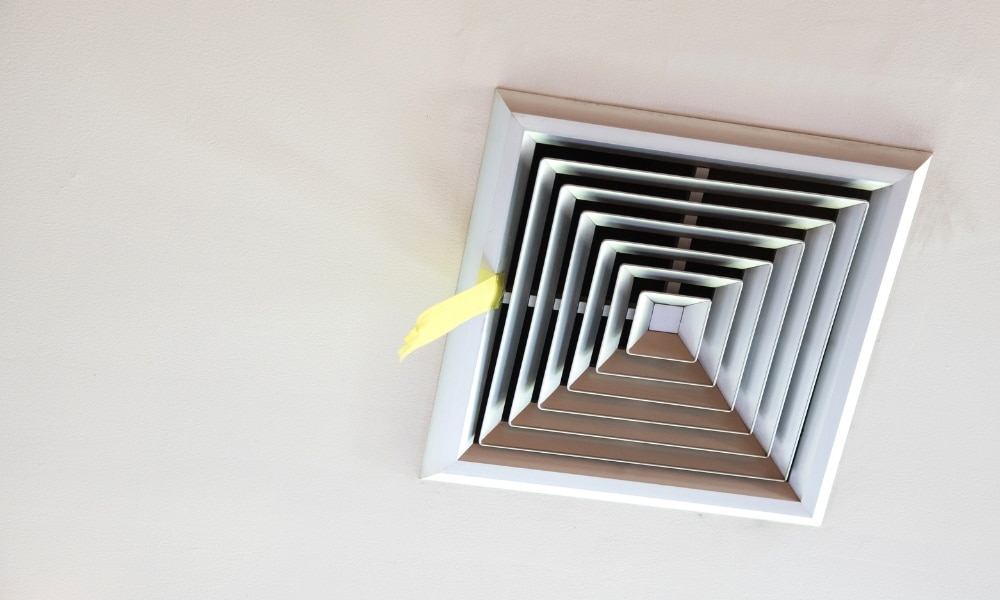Have you ever thought about how strong the air coming out of your vents should be? Understanding the strength of the airflow in your home is important for maintaining comfortable indoor air quality, maximizing energy efficiency, and preventing potential problems with your HVAC system.
So, how strong should air come out of vents? Let’s take a closer look at the factors involved.
How Are Air Vents Connected to HVAC System?
Before we dive into the specifics of airflow strength, it’s important to understand how air vents are connected to your HVAC system. The air vents in your home are connected to your HVAC system through a network of ducts. Your HVAC system’s blower fan is responsible for pushing air through these ducts and out of the vents in each room of your home.
How Do You Measure Air Coming Out of Vents?
There are several ways to measure the strength of the air coming out of your vents. One of the most common methods is calculating CMF and airflow.

Calculating CFM (Cubic Feet per Minute) and Airflow
To understand the air strength from your vents, you’ll need to calculate the CFM (cubic feet per minute) of airflow. CFM measures the volume of air that passes through a given point in one minute. To calculate CFM, you’ll need to measure the airflow velocity and the area of the duct or vent. The formula for calculating CFM is:
CFM = Velocity (ft/min) x Area (ft²)Once you’ve calculated the CFM of airflow, you can use this information to determine if the air from your vents is strong enough to maintain a comfortable indoor environment.
Most common causes of low Air Flow from Your Ducts
If the air coming out of your vents isn’t as strong as it should be, several potential causes exist. Here are some of the most common:
- Clogged air filter: A clogged air filter can restrict airflow and cause your HVAC system to work harder than it needs to.
- Blocked ducts: Dust, debris, or other obstructions can accumulate in your ducts and block airflow.
- Leaky ducts: If your ducts are leaking, air can escape before it reaches the vents in your home, reducing the overall airflow.
- Undersized ducts: If your ducts are too small, they may not be able to accommodate the volume of air your HVAC system is producing.
- Faulty blower fan: If your blower fan is malfunctioning, it may not be able to produce enough airflow to adequately heat or cool your home.
How to increase the Airflow through the Vent?
If you’ve determined that the air coming out of your vents is weaker than it should be, there are several steps you can take to increase the airflow:
- Change your air filter: If your air filter is dirty, replacing it can increase the airflow and improve your HVAC system’s efficiency.
- Clean your ducts: If your ducts are clogged with dust or debris, cleaning them professionally can improve the airflow.
- Seal your ducts: If your ducts are leaking, sealing them can prevent air from escaping and improve the overall airflow.
- Install booster fans: Booster fans can be installed in your ducts to increase the airflow and improve the overall efficiency of your HVAC system.
What to do if there is no air coming out of the vents?
If there is no air coming out of your vents, there are a few things you can check before calling in a professional:
- Check your thermostat: Make sure your thermostat is set to “cool” or “heat” mode and the temperature is set to a comfortable level.
- Check your air filter: If it is clogged, it can prevent air from flowing through your system. Check your filter and replace it if it’s dirty.
- Check your ducts: Make sure your ducts are open and not blocked by furniture or other obstructions.
- Check your vents: Make sure your vents are open and not blocked by dust or debris.
If you’ve checked all these things and still don’t have air coming out of your vents, it’s time to call in a professional HVAC technician.
The strength of the air coming out of your vents is an important factor in maintaining a comfortable indoor environment and maximizing the efficiency of your HVAC system. By understanding how air vents are connected to your HVAC system, how to measure airflow strength, and how to calculate CFM, you can ensure that your HVAC system is functioning properly and efficiently.
If you’re experiencing low airflow or no airflow from your vents, there are several steps you can take to diagnose and solve the problem. By taking proactive steps to maintain your HVAC system, you can ensure that it keeps you comfortable and efficient for years to come.






